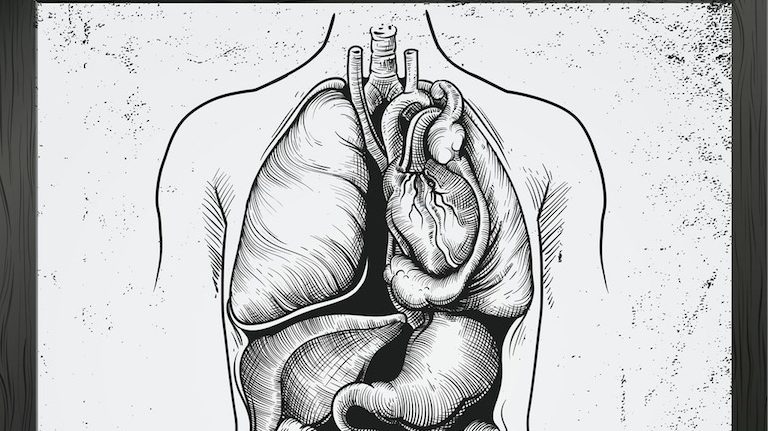Doctors Discover New Organ in Human Body To Help Treat Cancer

Scientists discovered a new organ in the body that turns out to be one of the largest. The interstitium is a series of fluid-filled compartments found beneath the skin, and could hold the key to understanding the spread of one of humanity’s biggest medical dilemmas: cancer.
Originally perceived as connective tissue, the interstitium has eluded doctors and biologists as an organ of its own, with a specific task of transporting and filtering fluids throughout the body.
Before this discovery, it was assumed that our skin was the largest organ, but now the interstitium may prove to be even larger. This new distinction would mark the body’s 80th organ.
The word interstitium derives from the Latin “inter,” meaning between, and “sistere,” meaning to place, – the place between. Doctors believe this in between organ may also act as a sort of cushioning to keep our organs safe.
The interstitium is the source of lymph, where white blood cells are transmitted to fight infections. It is also important for transporting protein from the blood to a multitude of organs and cells.

Researchers still need to confirm whether it qualifies as an organ, but a new perception of the interstitium seems promising for tracking and advancing the spread of diseases. While the tissue is important for transporting fluids throughout the body, it is also likely to be responsible for spreading cancer.
The organ was originally looked over because of its pervasiveness and the way it was studied. In the past, doctors sliced into the interstitium during biopsies, upon which all of its fluid would drain, leaving it flat and solid.
But now through an endoscopy procedure, in which doctors examine organs using a tiny camera attached to a thin, flexible tube, they gained a new perspective on the interstitium and the important role it plays in supporting bodily functions.
The paper published in the journal Nature says the existence of the location and structure of larger inter- and intra-tissue spaces is described vaguely in literature and that in vivo advances in microscopy were responsible for better understanding it. These advances will likely lead to further discoveries in the future, while also showing just how much we still have to learn about our own anatomy.
Scientists Finally Finished Mapping the Human Genome

Scientists announce they have finally completed the map of the entire human genome. Will the information contained within unlock our true potential for health and wellbeing, or is there another more expansive perspective on the role genes play in our lives?
After decades of research, scientists have recently announced the completion of the human genome, what some call “the genetic instruction book.” Widely used for guiding biomedical research, many experts herald this as a crowning achievement in the field.
Dr. Bruce Lipton is a cellular biologist and a pioneer in the field of epigenetics, which takes a comprehensive, cutting-edge approach to the understanding of our relationship to our genes.
“Most people are really excited about the fact that the human genome has been deciphered; they’ve identified how many genes are in the human genome,” Lipton said. “The original reason for the human genome was, it was thought the genes control all the characteristics of our life and therefore if I had a compendium of all the genes I could fix anybody who has a characteristic they want to change. Francis Crick, one of the cofounders of the story, came up with something called “the central dogma,” the belief that genes are the source of biological information.
“They’re translated into another form of nucleic acid called RNA. So, DNA goes into RNA which is like a xeroxed copy of the DNA, and then the RNA is used as a template to make the proteins of the body,” he said. “According to the central dogma, information only flows in one way — it flows from the DNA to the RNA to the protein. This led to an understanding called ‘genetic determinism.’ Genetic determinism is the belief that the genetic blueprint of your life is carried by the DNA that you inherited at the moment of conception.”





































